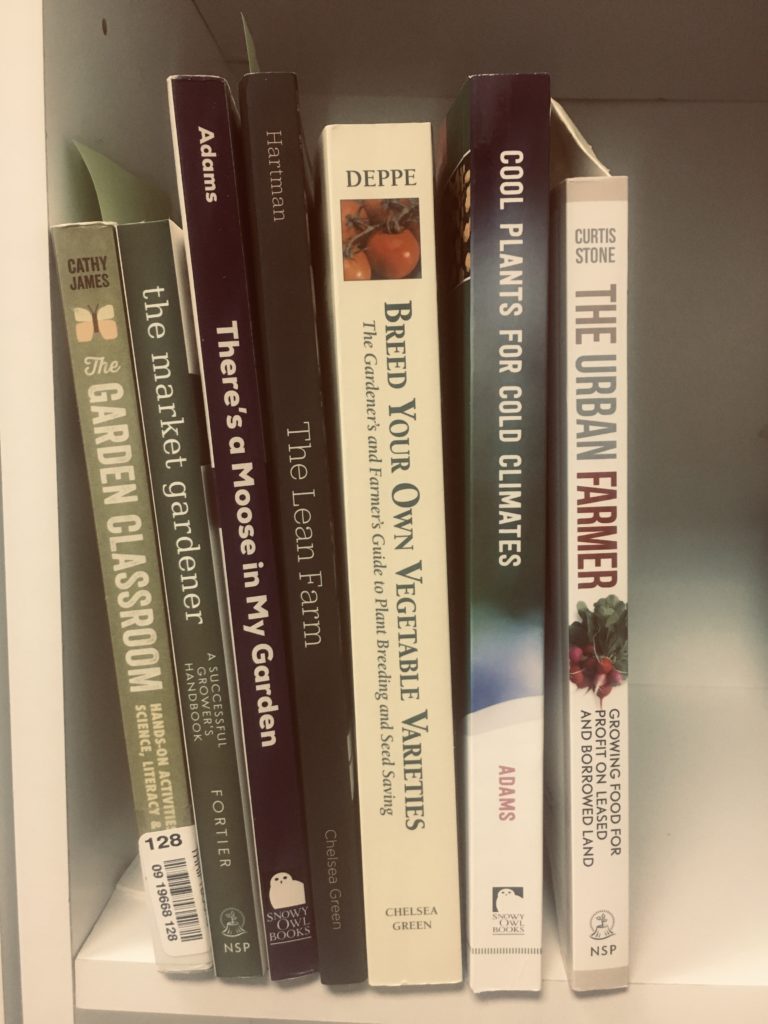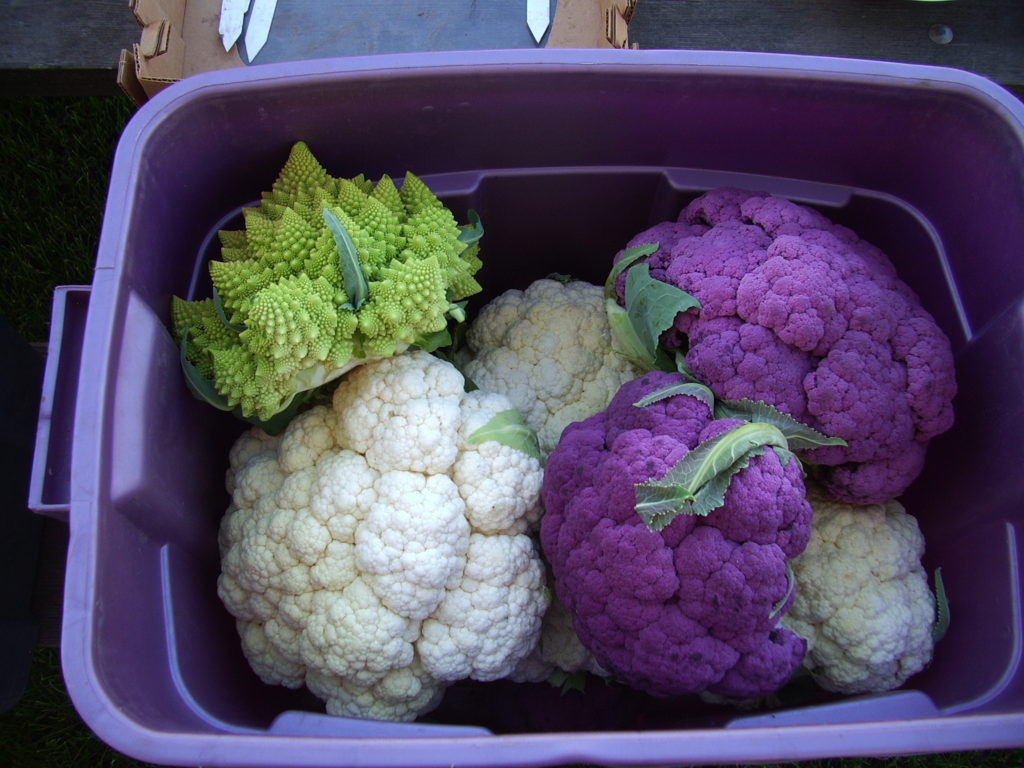If you find yourself with any extra time these days, you know, because there’s a pandemic, check out one of these inspiring garden reads. Here’s what’s on my book shelf.

Recommended garden reads
The Garden Classroom by Cathy James is an excellent resource for teachers, parents, or those involved with children. It’s intended for kids aged 4 to 8 and has all sorts of fun, creative ideas for integrating learning with the garden whatever subject is the focus (math, science, reading, and art).
Brenda Adams, is an award-winning landscape designer in Southeast, Alaska and has written two books: There’s a Moose in My Garden and Cool Plants for Cold Climates. Although you’ll need to filter her plant recommendations through the lens of an Interior gardener, the books are inspiring, beautiful, and backed by a very experienced Alaskan landscaper. They will help you whether you’re designing a new flower bed or an entire landscape.
Not only will Breed Your Own Vegetable Varieties by Carol Deppe spark your interest in saving seeds, it might also inspire you to develop a new vegetable variety. Deppe explains it’s easier and more fun to develop new varieties to suit your own desires and location. We live in a unique climate and have a relatively small population so it’s worth trying! If you’re inspired, then check out the Ester Seed Library and ‘borrow’ some seeds that other local gardeners have been adapting for Interior Alaska. The seeds are free, but you’ll be expected to save and replenish the seeds. While you’re there, look for books on this reading list at the John Trigg Ester Library or other books on sustainability and agriculture. Continue reading

